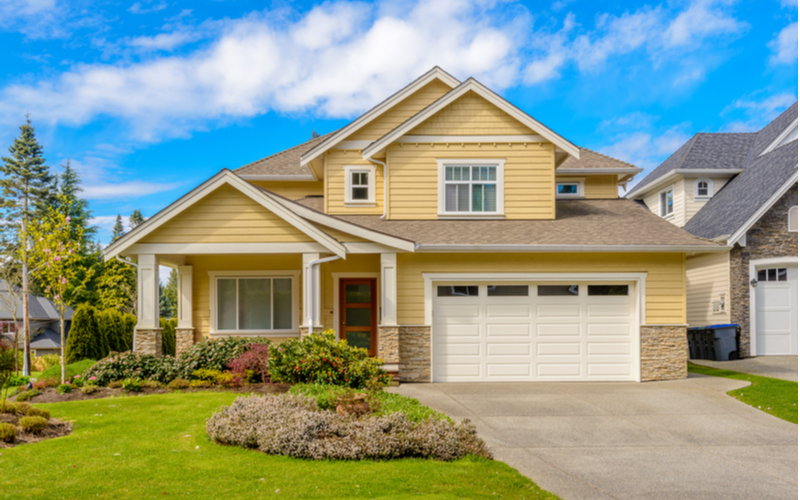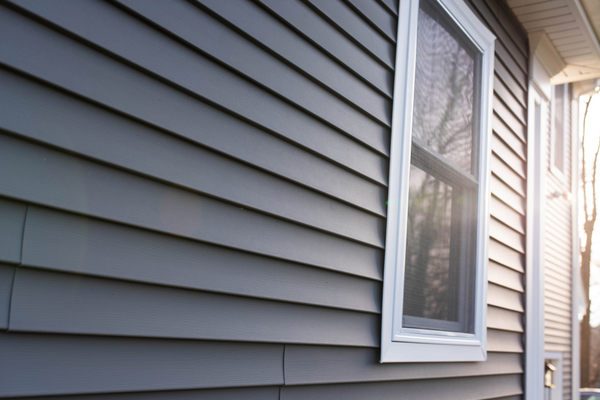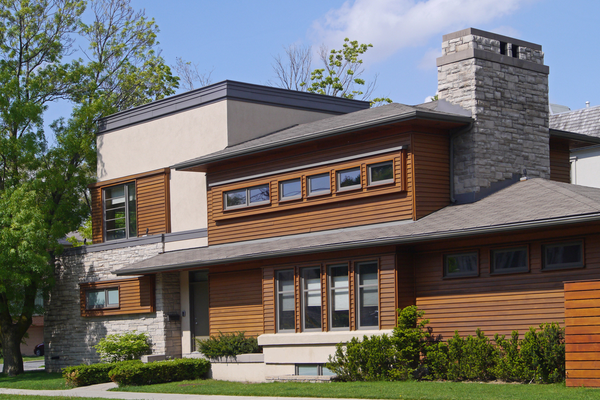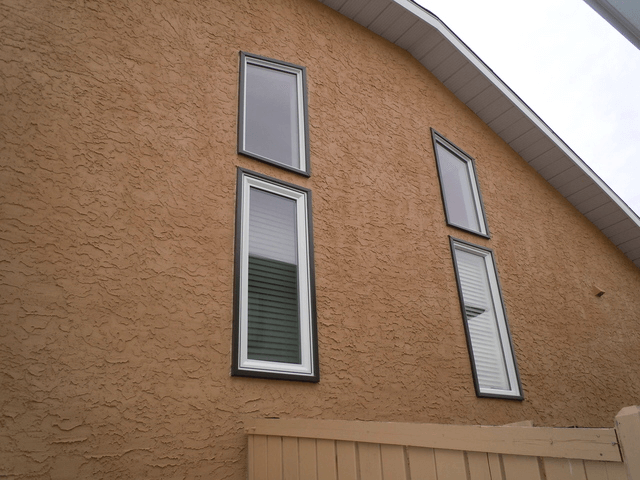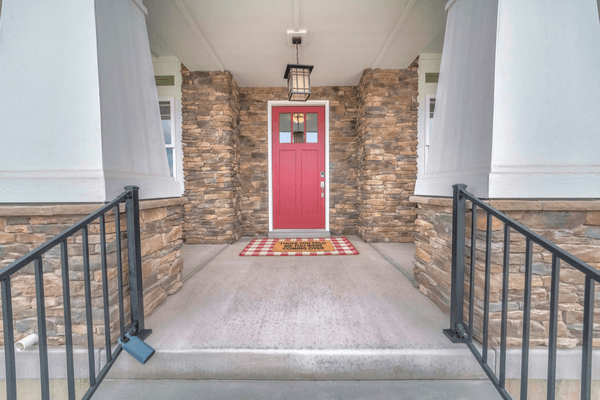House siding is more than just an aesthetic piece to your home. While it does help increase your curb appeal, the main purpose is in protecting your home from exterior elements. With a variety of seasons and weather conditions in Canada, when planning for a siding installation or siding replacement, it’s important to select a siding that not only pleases your personal style but also is practical for the environment around you. Learn more about some different types of siding below.
Vinyl Siding
Vinyl siding offers a variety of colours to choose from, making it very customizable. Additionally, painting vinyl siding is a great way to upgrade your home, rather than replacing it, as a way to save money.
Vinyl siding is popular amongst homeowners as it is one of the cheaper options available. It is also fast and easy to install. Vinyl siding is low maintenance and is easy to clean with soap and water if needed. With its simplistic look, vinyl siding can be combined with other sidings as well. Take a look at the job completed by MAXgreen Windows, Siding And Roofing below, where they used both vinyl siding and stone veneer to complete the exterior of the home.
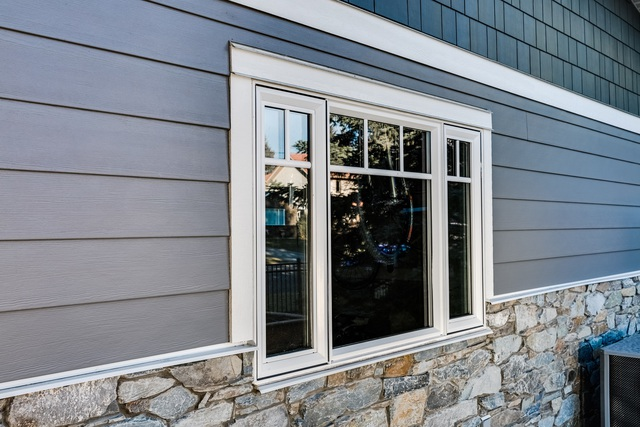
Image courtesy of MAXgreen Windows, Siding And Roofing
The downside is that vinyl siding is not known for thermal blocking, which may impact your utility bills. However, you can install thin insulating layers to make up for lost heat. The low cost of vinyl siding outweighs the cons in this case.
Cedar Siding
Of the available options of wood siding, cedar siding is the most popular due to its beautiful appearance. There is a variety of styles available, from patterned shingles, shingle shakes, shiplap, board and batten, and many more. To help lengthen the lifetime, cedar can be stained or sealed, making it more weather resistant. Cedar is also known to be a good insulator.
Cedar siding is higher maintenance than others. This can include washing and re-staining it every year. Cedar is also more prone to mold and mildew and is more expensive than vinyl siding.
Stucco Siding
Image courtesy of MAXgreen Windows, Siding And Roofing.
Stucco is known for its classic look. When selecting your stucco siding, you can customize the colour to the preferable tint you desire.
Stucco is a very durable material and can stand up well to all sorts of weather. It is low maintenance and also insect resistant. Additionally, it offers good insulation and can reduce exterior noises inside.
However, you should know that stucco can crack under pressure, specifically if your home expands as the temperature changes. It is not recommended that you repaint stucco as paint can begin to peel quite easily. It also requires a professional installation for the best results.
Stone Veneer Siding
Stone veneer siding can provide a very natural look to your home. It is also one of the more popular options as it provides a huge return on investment.
This type of siding is very durable and low maintenance. Compared to regular stone siding, stone veneers are lighter and can provide your whole house with siding, rather than just sections. It is also less expensive compared to natural stone, offering the same appearance.
Note that even though stone veneer brings out the royal look for your house, it’s prone to moisture and water damage, especially if installed incorrectly. As well, compared to other types of siding, it sits on the more expensive side.
Below are the average costs of siding services across different cities in Canada:
| City | Average | Minimum | Maximum |
| Barrie | $5,731 | $1,000 | $11,000 |
| Calgary | $9,551 | $100 | $50,000 |
| Edmonton | $11,057 | $175 | $47,000 |
| Hamilton | $7,666 | $100 | $35,000 |
| Oshawa | $3,115 | $350 | $8,500 |
| Ottawa | $6,047 | $250 | $47,000 |
| Toronto | $6,785 | $100 | $50,000 |
| Vancouver | $12,620 | $280 | $45,000 |
*Costs based on 2,344 verified Canadian homeowner reviews as of March 2022
If you’re looking to replace or install your home’s siding, connect with siding contractors today. Be sure to research all the different options of siding available. It can be easy to make a choice based on your personal preferences, however, be sure to incorporate other factors such as durability, maintenance, and cost into your final decision.
